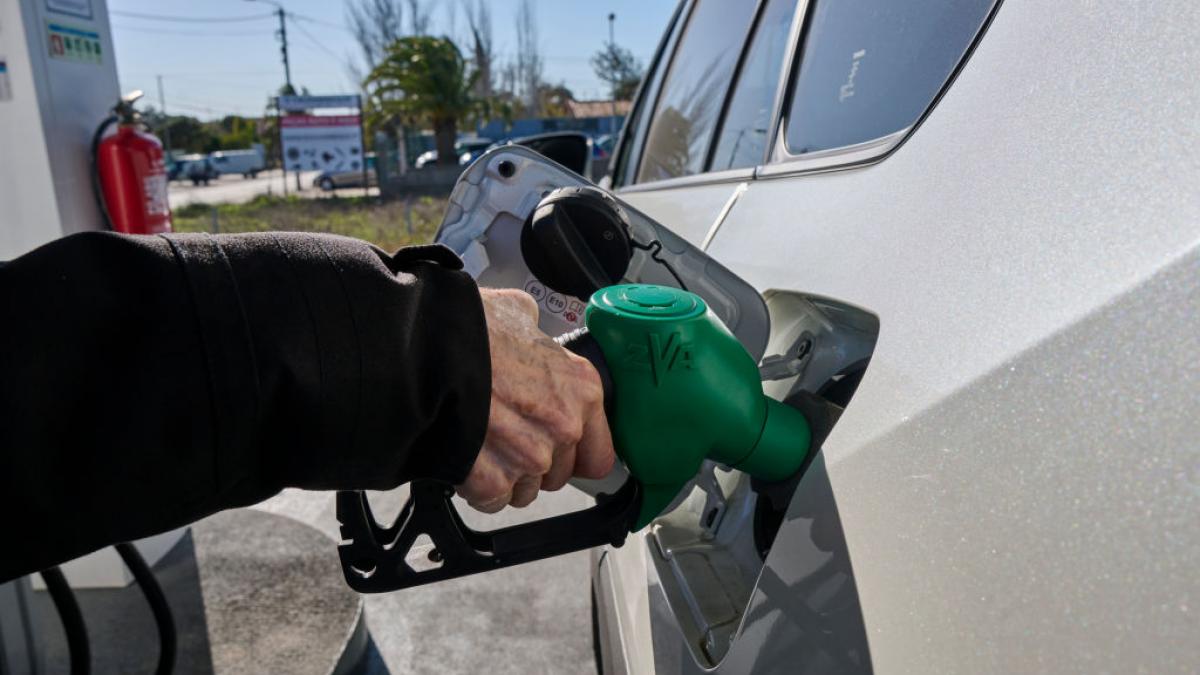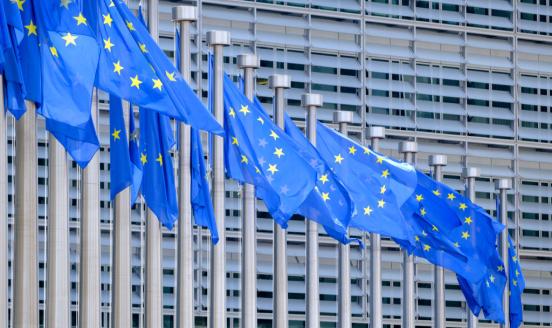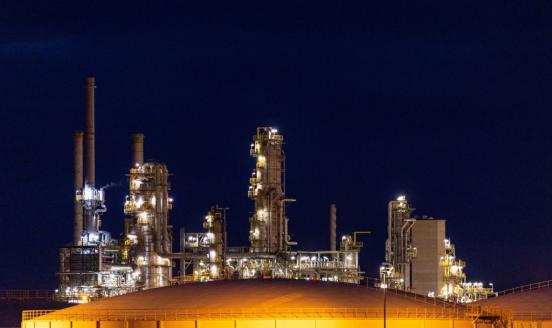Europe’s half a million barrels per day diesel supply question
A new European Union embargo on Russian oil products should not affect EU diesel supplies and prices, but could encourage re-routing by Russia.

Over the past few years, about 40% of the diesel imported by the European Union has come from Russia. This share did not drop after Russia’s invasion of Ukraine. Throughout 2022, the EU imported around 2 million tonnes of diesel from Russia every month, or half a million barrels per day.
However, on 5 February, the EU began to apply an embargo on Russian oil products – mainly diesel – joining the United States, United Kingdom, Australia and Canada, which already implemented bans last year. The EU embargo on Russian oil products complements an embargo on Russian crude oil shipments, introduced on 5 December. EU imports of heavy fuel oil and naptha from Russia have already largely been phased out (Figure 1, first panel).
The new embargo is reinforced by an EU/G7 price-cap system under which provision of insurance and shipping services related to the transportation of Russian oil products to third countries is prohibited, unless products are verified to have been sold below a price cap. Services based in the EU/G7 cover 70% of the voyages transporting Russian oil products, and the cap thus aims to limit revenues Russia could earn by rerouting diesel exports from countries that boycott Russian oil products to those that don’t. The price cap for diesel has been set at $100, above recent market estimates before the cap was introduced, implying that the cap will not initially have much impact.
Imports of diesel, economically significant for its use in transport, make up about 20% of EU supply. The EU will therefore need to replace Russian imports, accounting for about 8% of total monthly supply, either by reducing demand or boosting imports from elsewhere.
Diesel markets have been tight for the last 12 months. The 80% of EU diesel that is not imported is refined domestically, though largely from imported crude (Figure 1, second panel). Even before Russia’s invasion of Ukraine, prices at the pump in Europe were rising, driven largely by transportation demand growing after the pandemic (Figure 2). In the second half of 2021, natural gas scarcity and exploding prices also pulled up diesel prices, firstly because natural gas is a feedstock in the refining process, and, secondly because diesel is a substitute for natural gas in certain applications.
The diesel embargo: EU supply is secure
The EU does not expect sudden diesel supply shortages or price hikes in the wake of the new embargo. Industry has had months to prepare, stocks are high and diesel imports from Russia can be replaced by alternative suppliers if EU buyers want to pay for it (Figure 3).
In the longer term, the fallout for global diesel markets and prices is uncertain. If the EU enters new markets to buy non-Russian diesel, prices could rise. The most potent tool at the disposal of the EU and G7 allies to alleviate possible price rises would be to reduce overall demand for diesel. This could be done through measures including the reduction of speed limits on highways by at least 10 km/hour, promoting the use of public transport, restricting private car access to roads in large cities, increasing car sharing, promoting practices to reduce fuel use, and promoting efficient driving in relation to goods vehicles and delivery of goods.
The price cap: a global reshuffling of diesel markets?
Beyond demand reduction, as the EU switches to suppliers other than Russia, the fundamental question will be whether Russia can reroute the half a million barrels per day of diesel it previously sold to the EU. This depends on i) the provision of western shipping and insurance services covered by the price cap, and ii) finding new buyers.
The EU has set the price cap at $100 a barrel for petroleum products, including diesel, that trade at a premium to crude oil. On top of this, a cap of $45 a barrel was also introduced for oil products that sell at a discount, such as fuel oil and some types of naphtha. Given that Russian diesel was selling at prices below $100 anyway before the cap’s introduction, Russia’s immediate challenge will be more about finding new buyers than worrying about shipping or insurance.
Unlike for crude oil, India and China have so far not shown any great appetite for increasing diesel imports from Russia as they prefer to continue to use their substantial domestic refining capacity.
One likely outcome of the new EU embargo and price-cap mechanism is that Russia will increase diesel exports to countries that export diesel to the EU, in a process of global rerouting. Candidates include Egypt, Turkey, Algeria and Morocco, while longer trade routes could involve Middle Eastern countries such as the United Arab Emirates and Saudi Arabia. They could buy discounted Russian diesel while installing additional refinery capacity to help quench Europe’s thirsty market. Or, if the EU increases diesel imports from the United States, Russian diesel might flow to current US customers in Latin America. Russia will also look to adjust its domestic refining capacity, and export either more crude oil or refined products, depending on market and price cap conditions.
The price cap level, therefore, should be meaningful if this trade reorientation is to reduce Russian revenues. If this turns out not to be the case, the price cap should be reduced from $100 to a significantly lower level. Otherwise, the EU and G7 alliance will continue to facilitate Russian diesel exports, by redirecting them to new markets.
French strikes and Chinese exports
The embargo and price cap do not occur in a vacuum. Wider global economic forces will continue to influence diesel markets. Two factors are particularly significant (Figure 5).
The first is ongoing industrial tensions in France, where in recent months industrial action has reduced diesel output from refineries. The second relates to the volume of oil products authorised for export from China. Chinese government policy has for a number of years tightly regulated diesel export volumes, and in the second half of 2021 permitted volumes were slashed dramatically. However, there has been a steady increase in export permits so far in 2023.
A scenario in which Russia struggles to redirect diesel exports, while low output from French refineries continues and China tightens diesel export quotas, would put substantial pressure on diesel prices in 2023.
Note: the figure compares November 2022 Russian diesel exports to the EU, with the reduction in French diesel refinery output in October 2022 resulting from strikes, and our estimate of the possible fluctuation in Chinese diesel exports throughout 2023. We base this on Chinese diesel exports in H1 2021 averaging approximately 0.5mb/d, then averaging 0.1mb/d for the next 12 months after the tightening of export quotas. In the last months of 2022, Chinese diesel exports were reported at 0.4mb/d in September and 0.7mb/d in December. There is the potential therefore for diesel exports to remain elevated, but future Chinese government policy on granting export quotas is not clear.
How to evaluate the embargo and price cap?
The EU is well prepared and will be able to source diesel from new markets if required. The impact on global prices will depend on the extent to which the EU and G7 allies are able to reduce demand, the ability of Russia to reroute exports and wider global forces.
Even if it continues to be set at a generous level, the price cap will encourage Russia to gradually look elsewhere for shipping and insurance services. The cessation of Russian exports to the EU implies that global oil trade will be further split into Russia-sanctioning and non-Russia-sanctioning blocs.
The EU and G7 alliance faces two challenges. The first is the extent to which the EU re-imports Russian diesel from third countries that blend multiple crude oils in order to disguise origin, or that simply substitute Russian imports for domestic consumption. A clear option would be to lower the price cap so third countries must extract sizeable discounts from Russia in order to be facilitators of this trade.
The second challenge concerns the information the EU and G7 alliance will have on exactly where and at what price Russian exports flow. It is already difficult to establish just how much revenue Russia can extract from new crude-oil export routes, where pre-war pricing methodologies that work from the loading price in the Baltic or Black Sea are no longer accurate. Moreover, crude oil from Russia’s eastern ports continues to trade above the $60 price cap, potentially indicating problems with the certification process used to verify that the cap is respected.
Similar challenges will emerge as Russia sends its diesel supplies elsewhere. Considering the associated costs and political importance of sanctions, the EU and G7 alliance should invest in reliably tracking oil and oil products leaving Russia, and should make this information publicly available to reinforce current transparency efforts and help policymakers and the media highlight objectively the main routes for sanction circumvention.



